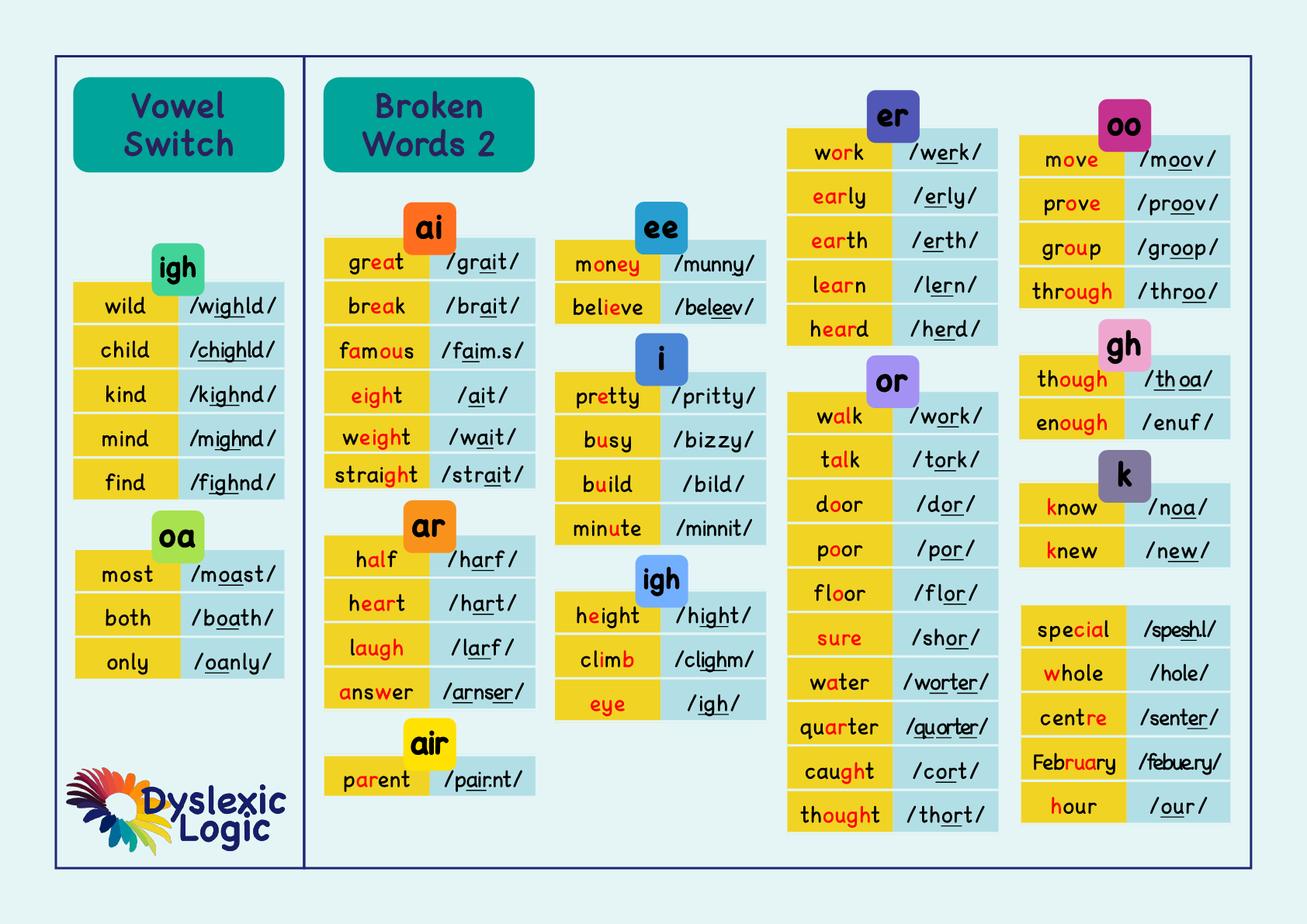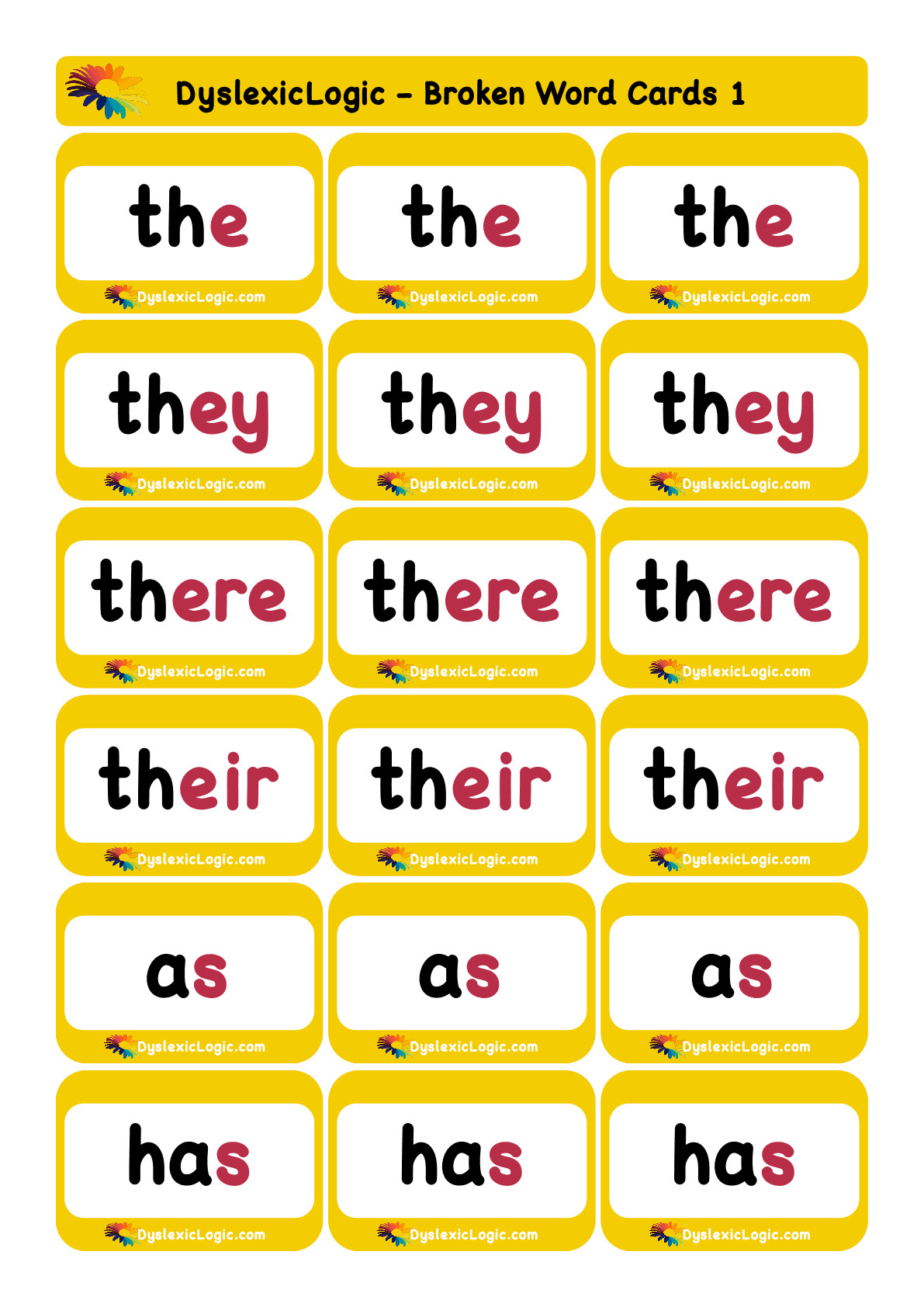A note about terminology -
Broken words are also known as non-decodable, exception, tricky (high frequency tricky/ HFT) or red words. I prefer to call them broken words as this makes it clear that the problem is with the word, not the child. I then highlight that actually it isn’t the whole word that is broken, just a letter or two. The difficultly with the term ‘tricky words’ is twofold. Firstly, the term is often used to indicate that things are difficult, so complex decodable words are often considered ‘tricky’ by children. The second issue is that it suggests a child could figure it out, when actually they cant. The phrase ‘red words’ is an issue as most of the time these words are not ‘red’ at all which is confusing when accessing standard text. So I use the term broken words with younger children, and non-decodable words with older children but it doesn’t really matter as long as we are clear that we are talking about words that, in part at least, cannot be sounded out.
Broken Word Bookmark
This bookmark/table-card can be used to support children’s independent reading and writing skills. The words are presented so the child can compare what the word looks like with what it sounds like. There are few words that remain non-decodable once the graphemes-phoneme correspondences have been taught.
The ‘broken’ part of the word is highlighted in red. Words are grouped to help children navigate the page.
set 1
set 2
SET 1
SET 2
Broken Word Cards
These pages can be printed double-sided and cut into three sets of Broken Word Cards. These are designed so the ‘looks like’ side is yellow and the ‘sounds like’ side is blue, in line with the colour coding used on the Broken Words Bookmark.
The first set of words has long final vowel sounds. These are ‘shouting vowels’ where the final letter has enough space to shout its name. These are fully decodable once the child understands how vowels respond to spaces but are often taught as irregular words and need to be introduced early as they are very common.
Choosing High Frequency Tricky Words
The words chosen are those usually included in lists of the first 100, 200 and 300 high-frequency words children are expected to know on sight. They are included on the Dolch Sight Words List. The critical difference between Dyslexic Logic resources and other resources is that we separate out the decodable from the non-decodable words, clarifying for children whether a 'sounding out’ or a ‘sight learning’ strategy is appropriate for both encoding and decoding the word. These word lists and resources include ONLY the broken words (non-decodable/tricky/exception words). Only after a child can confidently recognise the word on sight are they expected to read them embedded in text.



